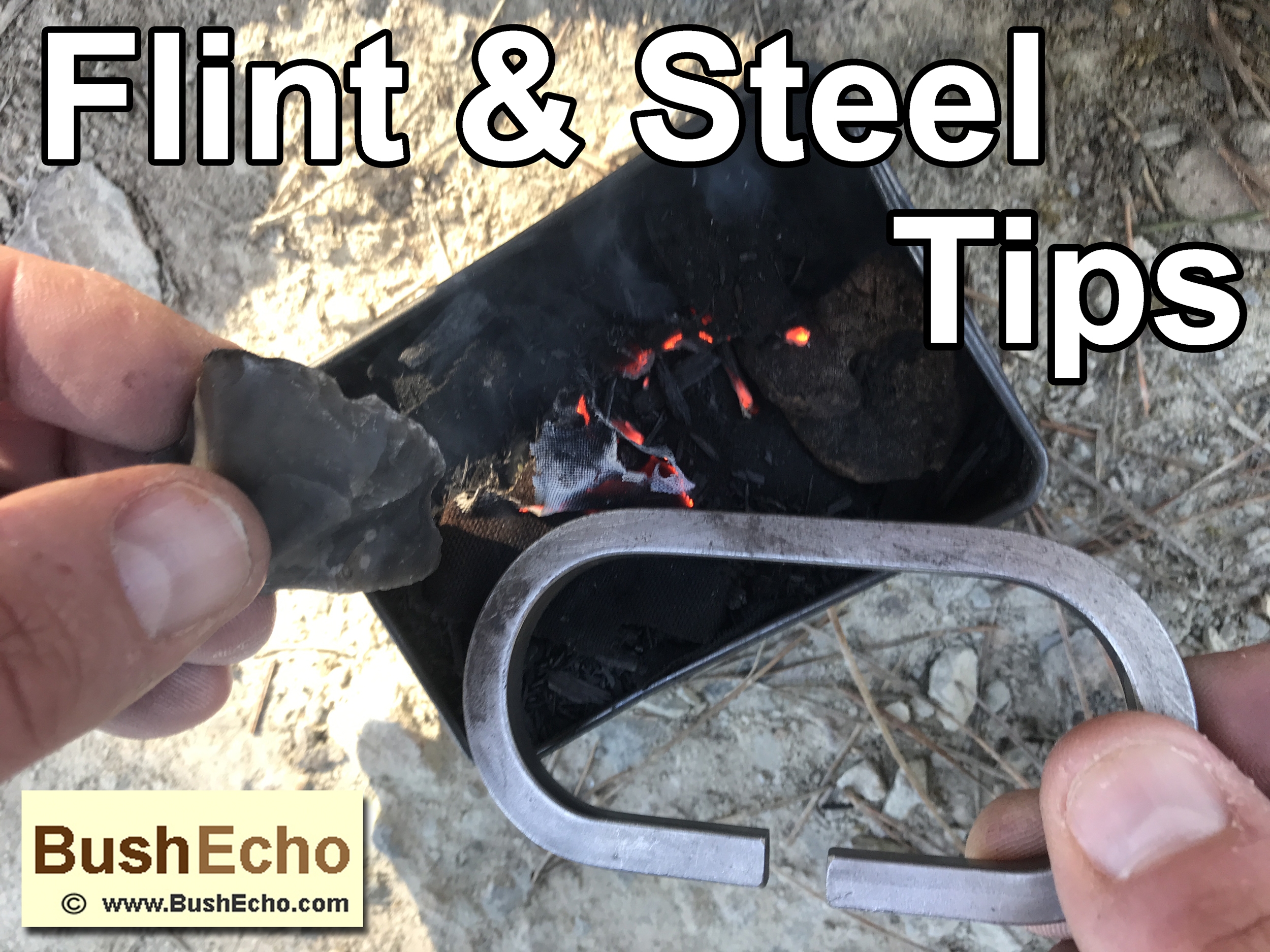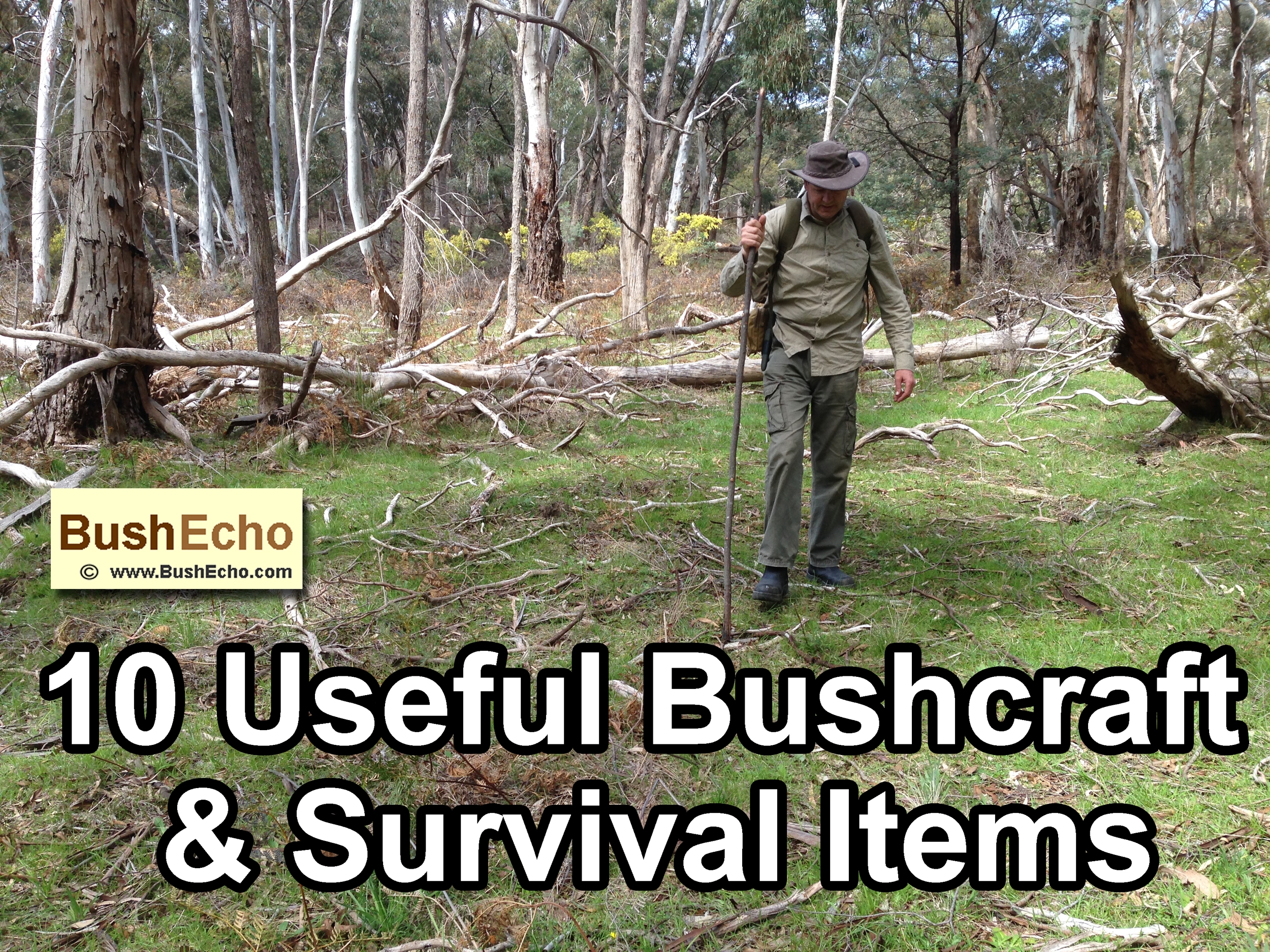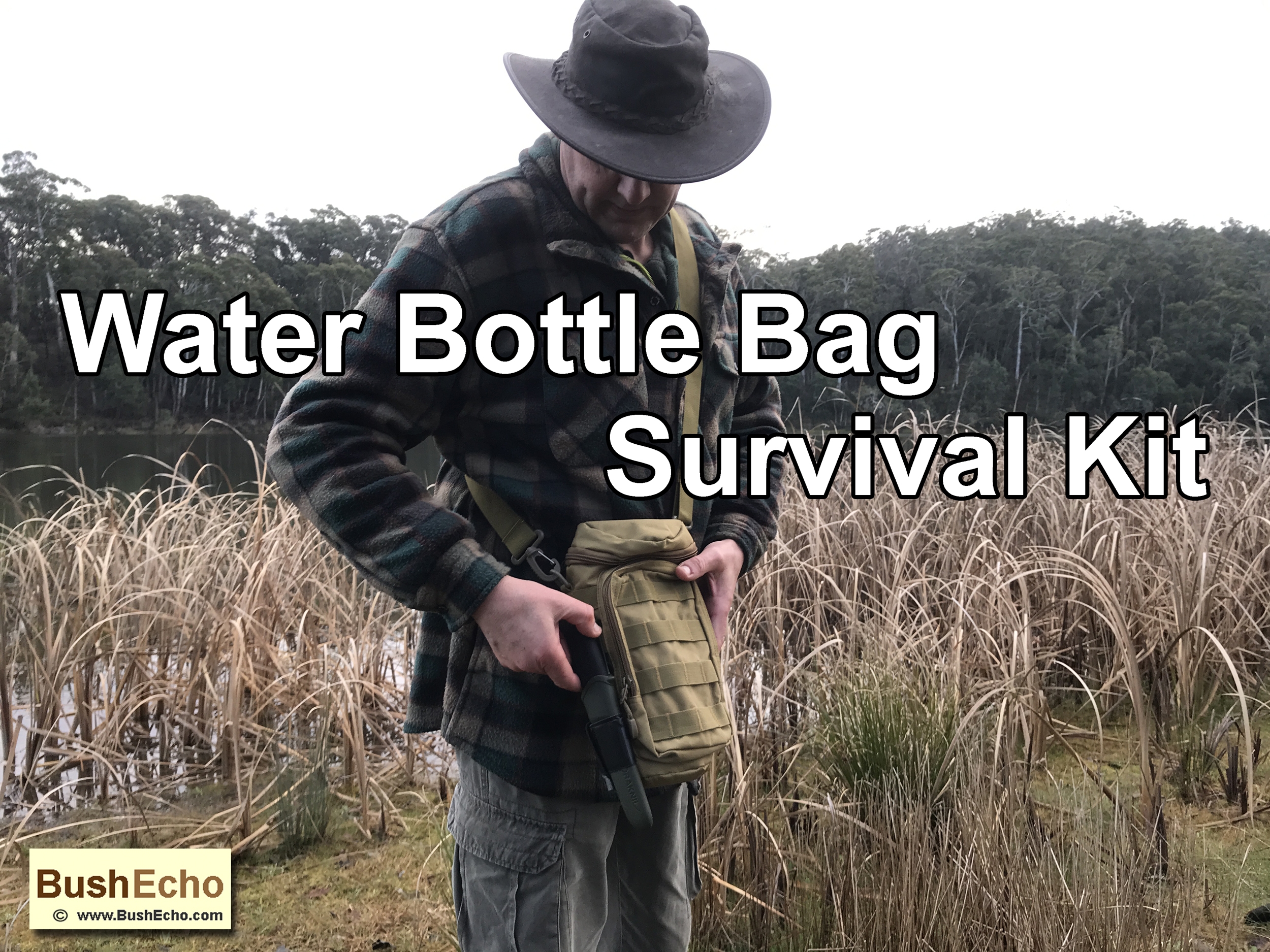Here are some camping tips to help make life a bit easier for the family campers, beginners and the outdoor camping fans. While this article isn’t about bushcraft skills, or aimed at hikers, woodsman, there might be a few tips that may interest them as well.
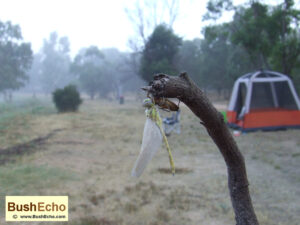
In no particular order, here are twenty camping tips:
1. Zip it.
When you get in and out of the tent, finish the zip (Double zips.) on the tent at the same height each time. This makes the zipper easier to find, especially if you have to get out of the tent to go to the bush toilet late at night, or in a hurry.
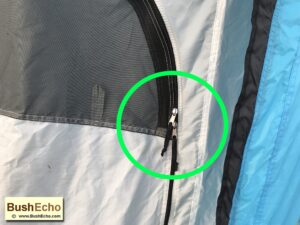
It also saves the oldies from bending down low to try and find the tent zipper.
Show and ask the children, or tent goers to finish the zip at the same place.
Remember to always zip up the tent, so no insects get inside.
2. Controlled camping in the back yard.
If there are children who haven’t camped before, one way is to slowly introduce them to camping, is to set up the tent in the back yard first.

Sleeping on a mat, sleeping bags, in a tent, etc., might be strange if the children, (or adults) aren’t used to camping. So the backyard is a more controlled environment and ideal first to get them used of it.
For unpredictable weather, this also makes it nicer. If the weather does turn bad, the house is only yards away.
3. Color it, secure it and check it.
The forest and bush is notorious for eating up camping items and bushcraft tools. That is, people lose articles all the time. (I have found an expensive Leatherman tool on a trail, a box of good fly fishing flies, etc., in the woods and at fishing spots.)
Items fall out of packs or pockets, or people place tools down after they use it and forget to pick it up. One solution is to put bright colored tape on outdoor and camping items.
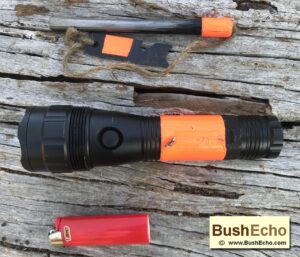
Fluro orange, pink, or yellow tape on knives, ferro rods, torches, makes items easier to see and find. Also folding saws, axes or camp hatchets, etc., can also be brightened up for easier visibility.
Also when possible, choose brighter colored tools, like a yellow Bic lighter instead of dull or dark colors.
For extra security, tie lanyards on valuable items like, compasses, car keys and pocket knives, and attach them to your belt. Or inside of back packs, etc.
One rule of thumb I try to instill to the kids (And me.) is; whenever we go for a hunt, fish or bushwalk and stop for a drink, before we head off again we check our pockets and have a quick look around were we stopped to make sure we haven’t dropped something. Which is easy to do when getting items in and out of our back packs.
4. Look up, look down and look around.

Before setting up camp, there are a few safety points to check out.
Look up for widow makers. Widow makers are dead overhanging tree limbs and trees that may fall down at any time. Rotted trees, shallow roots, grubs eating the trees, burnt damaged trunks are just a few reasons why the trees come down.
It doesn’t have to be a windy day for a tree or limb to fall either. On calm still days, I have heard (And seen twice.) trees and limbs crashing down for no apparent reason. Some species of trees are more prone to fall down then others.
You shouldn’t set up camp on game trails. Who knows what unhappy animal might come wondering down the trail.
As well as looking up for potential danger, look at the ground and avoid nasty biting insects or stinging plants.
(During a training exercise in the army reserve, I once un-expectantly set up camp (Army tarp shelter.) on a bull ant’s nest. It was late at night and the red tactical flashlight didn’t pick up the nest. Or more accurately, I didn’t check the ground thoroughly enough because I was tired. It wasn’t until the next morning that I realized. Luckily the bull ants weren’t active that night.)
Make sure you don’t set the tent up on any dry river beds, or low areas prone to flash floods.
5. Fire pit trench.
A fire pit can help reduce the annoying wind when cooking. Dig a small trench and use the excess dirt too create a small wind break. Don’t dig the fire pit too deep, as some oxygen is needed for the fire to burn nicely.
Of course on very windy and in dry conditions, a camp fire should be avoided, as the potential for the fire to get out of control is great.
6. Air out bedding.

When camping for a few days, air out the sleeping bags and mats. The condensation in the tent, can make the bedding damp, so it is a good idea to dry them out and refresh them.
Hang a ridgeline (Like a clothesline.) between two trees and hang the sleeping gear to air it out. Before putting the bedding back into the tent, check for bugs.
7. Before it gets dark.

Grab the torch, or headlamp out before dark. Trying to find the packed light in all the camping gear, when it is dark might be hard to find. (While you can use your phone light, this can drain the battery.)
Allow twenty minutes or so before low light and get the torch out and check it works. If the batteries are flat, you have time and good light to replace them.
Place head lamps around the neck or in your pockets, so you know exactly where it is before dark.
An extra set of batteries in the car is good insurance.
8. Firewood.
Always collect a bit more firewood then you think you need, especially for colder climates.
Don’t wait until it is just about dark before collecting firewood. In winter, the days are shorter, so allow for less daylight and colder evenings.
9. Improvise hot water bottle.

For cold nights, improvise with a hot water bottles.
Pour boiling water in a stainless steel (Single wall.) bottle. Wrap the bottle in a sock, or Shemagh, or in some clothing. Check the bottle doesn’t leak and be careful you don’t burn yourself. Place in the sleeping bag and enjoy the warmth.
(See my article on the hot water bottle for bushcraft and camping.)
You also have warmer water in the morning.
10. Cover up.
Long sleeve shirts and pants, not only help to avoid sunburn, but it also helps protect a bit from prickle plants and sticks when walking through the woods.
For places with lots of bugs and mosquitoes, long sleeve shirts and pants, are better options then shorts and t-shirt.
For the hot areas, a wide brimmed hat will give you better protection from the sun and glare. (Baseball hats while they look great, don’t really protect the sides or back of the neck as much as a wide brimmed hat from the sun.)
11. Improvise, adapt and practice bushcraft skills.
Forget to bring the hammer to bang the tent stakes in? Make a baton with a forearm thick piece of wood, about 2 feet long. (Approx. 60 cm.)
Also you could use the back of a hatchet, or an old axe for a hammer. (Safely of course.)
If you run short of tent stakes, improvise and create some tent pegs with some sticks. Carve a straight stick, about a foot long (About 30cm.) with a point on one end. Chamfer or crown the other end, so it doesn’t split when hammering.
12. Camping fire safety.
Safety first with camp fires. Check your state and country rules and regulations for camp fires. Is it seasonal, do they allow open flames, does the fire need to be in a pit, or allowed only in certain areas?
Have a shovel and water on hand if you have a camp fire.
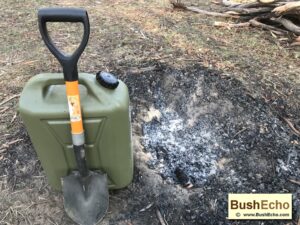
Triple check the fire is well out before you leave an area. Fires can smolder and burn underground for a long time, so it is always best to pour water on it and check the coals are cold.
Of course it goes without saying to take your rubbish with you and leave the site nicer then you found it.
13. Same type batteries.
This tip is a good one if you are hiking, or can only take limited items when camping. Where possible, use devices that operate with the same battery size.
As an example, the camera, GPS and headlamp might all take “AA” batteries. That way you can just take the one size battery for spares.
Also if you are on a hiking trail and the GPS goes flat, you can burrow batteries from the torch if you forget spare batteries. (Of course you still have your phone. As well as your map and compass and know how to use it.)
14. The big group fire and cooking.
With a big camping group, everyone loves to put some wood on the fire, especially on cold nights. Unfortunately this can make the fire way too big and too hot to get close for cooking. The solution is to just scrape some coals a little away, on the edge from the large fire to cook on.
Obviously don’t make it a fire hazard and make several fires. But just on the edge from the large fire. Use a shovel or stick to drag the coals safely. A small bed of coals is easier to control for cooking.
15. Set it up first.
If you have a new tent, try setting it up in the back yard first before you go away camping. As there is nothing worse than arriving at your camp site at night and trying to put together an unfamiliar tent.
This also gives you chance to see if there are any missing bits of equipment, such as tent pegs, guy ropes or damaged / zips and materials.
For some tents you need a PhD in tentology to set them up. (I don’t think that is a word, but it sounds good.) Or worse still, it doesn’t have instructions about which pole goes where.
Some switched on campers, might even put the hose on the tent in the back yard and see if the tent is leaking anywhere. Allow time for the tent to dry before packing it up.
16. Packing bedding and water containers.
Keep water containers and bedding separate when packing. Sometimes jerry cans, or water containers can leak.
If there is limited space and the bedding, clothes bags and water containers are going to be close together, place the clothes and sleeping bags up higher above the container. Separate the jerry can with a tarp, or plastic sheeting as a barrier, in case the containers splash around and leak.
If you have options, store the water containers and fuel outside in a trailer, or in a boat trailer.
17. The versatile camping tarp.

A large tarp and extra rope is handy to have camping. A tarp set up close by, is great for getting out of the tent on wet days, but you can still enjoy the scenery without getting wet.
With a tarp, set it up so like an awning or veranda. On hot days the tarp also provides extra shade.
A tarp set up, is also ideal for a cooking area and another place to store gear from the weather.
18. Stake out the tent with the diagonally opposite method.
When you peg out the tent, do one corner first and then stretch the tent floor out diagonally and stake out the next peg diagonally opposite.
If you stake out the tent by in a circle doing one corner, then the next closest corner, the tent floor can be set up crookedly.
A square, or rectangle tent properly set out by the diagonal method will make better use of the floor and tent set up.
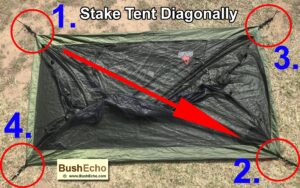
Hammer in tent peg number 1 first, then stretch the floor out and peg number 2. Then stretch and peg number 3, then 4.
The diagonal staking method is more important for larger tents. For smaller tents it doesn’t matter as much.
19. Pack extra water.
Always take more water than you think you need. A water container can accidentally get knocked over and spilled.
For unexpected hotter days, it is surprising how much water you can go through. So spare water is good insurance.
Don’t just account for the volume of water you think you might need to take for boiling up a coffee. You might also use the water for adding to food while cooking, drinking, cleaning up, washing, bush showers, etc.
Also the extra water can help insure the fire is well and truly out and safe, by pouring onto the coals and ashes and checking before leaving.
Along with extra water, another tip is to have more than one water container, in case one leaks. As an example, a bladder water container can rub and leak, or the seams burst losing all your water.
For hotter areas, have spare water in case you get stuck, lost or decide to spend more time there camping.
20. Last in, first out. Put the tent in last.
When packing the camping gear, pack the tent and chairs in the vehicle last. This makes the chairs and tent the first thing to access and get out, so it can be set up first. Or at least make them easy to get out.
The camping chairs are ideal to place unpacked items from the car on them. Rather than putting items on the ground. (Which the ground could be wet, or have nasty insects crawling around.)
Or you could just sit on the camping chair and contemplate the car trip from hell, were the kids were screaming, “Are we there yet?” “We’re hungry.” etc.
If it is raining, and you have packed the tent behind everything else in the vehicle, you have to pull everything out first. Easy access to the tent helps to set it up first, then simply transfer all the gear out of the vehicle, into the tent.

Summary – Camping tips.
I hope you enjoyed these camping tips and the ideas make camping a bit more enjoyable. If you have any hints or hacks, please leave them in the comment section below.
Remember to pack the marshmallows and hot chocolate and appreciate the outdoors.
Affiliate Links – This article may contain some affiliate product and Amazon affiliate links. This comes at no additional cost to the reader, and helps to support the website. Thank you.
Copyright © by BushEcho. Content on this site cannot be copied and is protected by copyright law. Please contact the author/s for permission.
Disclaimer – This information is for educational purposes only. The author/s and website disclaim liability for any damage, mishap, or injury that may occur from engaging in any activities or ideas from this site.

